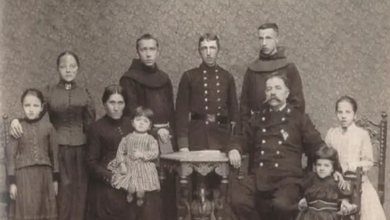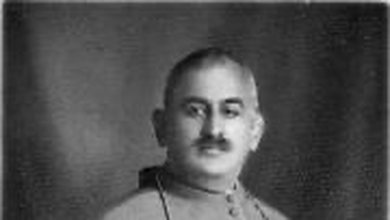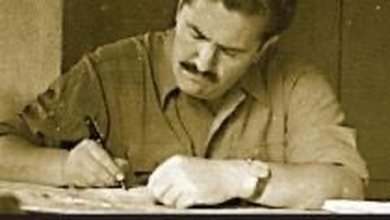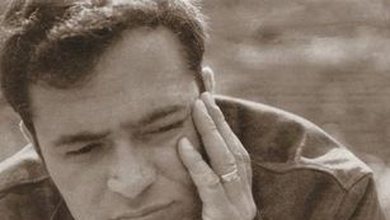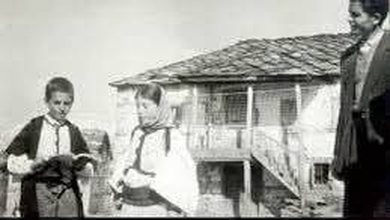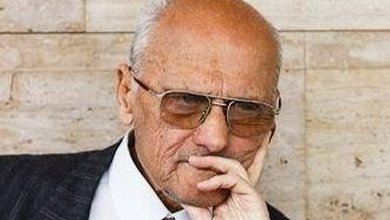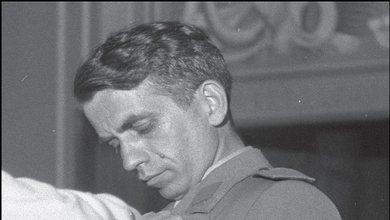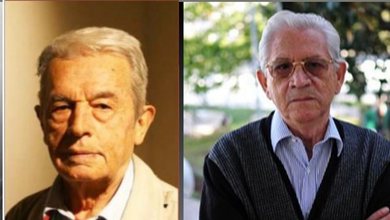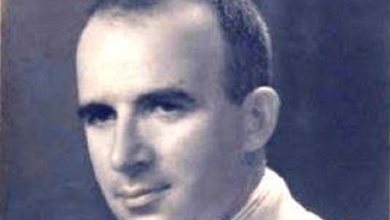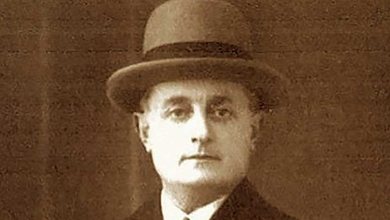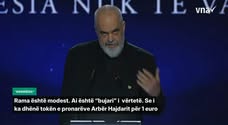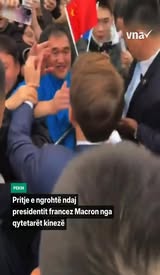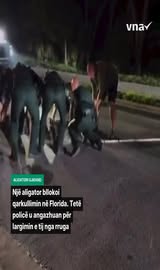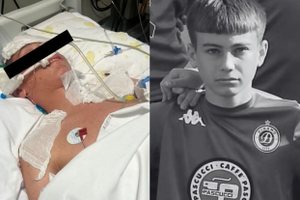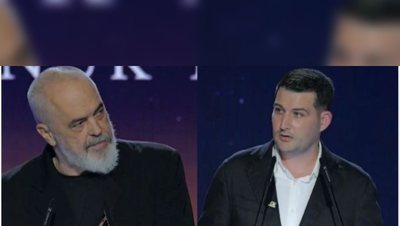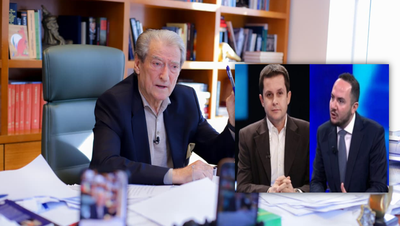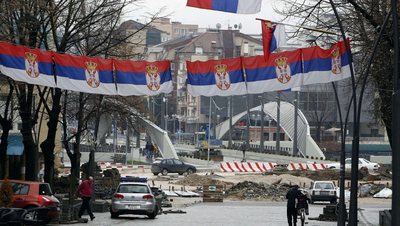
The Legacy of Violence: How Trauma is Passed Down from Generation to Generation August 23 marks the European Day of Remembrance for the Victims of Totalitarian Regimes – a day on which we pay tribute to those who suffered as a result of the violence of totalitarian systems of the 20th century – systems based on control, oppression and ideological enslavement.
This year's "Remember. August 23" campaign, organized by the European Network for Remembrance and Solidarity, focuses on intergenerational trauma – one of the most complex aspects of historical heritage.
Although it leaves no visible scars, it can span generations and affect entire societies, shaping relationships, identities, ways of thinking and reacting.
ENRS has invited a prominent researcher to reflect on this topic: Professor Michał Bilewicz, social psychologist and author of the book Traumaland, a study on the social effects of violence and collective memory.
ENRS, Mariola Cyra: What exactly is intergenerational trauma?
Prof. Michał Bilewicz: In psychology, intergenerational trauma is the phenomenon of the transmission of traumatic experiences from one generation to another – not only in the narrative sense, but primarily in the psychological dimension, affecting the mental health of descendants.
This phenomenon became the subject of intensive study in the 1970s and 1980s, especially in Israel. At that time, it was observed that veterans returning from the war in Lebanon who had parents who survived the Holocaust showed significantly more severe symptoms of post-traumatic stress disorder (PTSD) than those whose parents had not experienced such experiences.
Research conducted at that time by Solomon, Kotler, and Mikulincera showed that trauma can affect the sensitivity of subsequent generations to stressors, making them react more strongly to new and difficult situations.
Systematic studies of this phenomenon are still ongoing in Israel. Among others, there is a research panel with descendants of Holocaust survivors and people with identical demographic profiles, but from families without such experiences – such as those who lived in the former Soviet Union or the East.
Middle during the war.
They are surveyed regularly, both in everyday situations and in times of crisis. In stressful situations, the differences are clear: the offspring of survivors are more likely to experience mood swings, anxiety, depressive symptoms, or PTSD.
At the same time, Professor van IJzendoorn's meta-analyses show that in everyday conditions there are no major differences in mental health between the descendants of trauma victims and people from families without such experiences. The differences appear only in the reaction to stressors – and this increased sensitivity to threats is one of the key mechanisms of intergenerational trauma.
This clinical perspective is only part of the understanding of the phenomenon. I am also interested in the social consequences of this trauma, such as lack of trust, a tendency to believe in conspiracy theories, hypersensitivity and anxiety. These are not simply mental disorders – they are manifestations of a social functioning shaped by the legacy of past traumas.
Question: To what extent have totalitarian regimes left their mark not only on history, but also on the psychology of society? Can we speak of a post-traumatic society?
Prof. Michał Bilewicz: Yes, we can definitely talk about such societies. In cross-cultural psychiatry, but also increasingly in psychology, the term historical trauma is used in this context, which differs from intergenerational trauma.
The former refers primarily to psychological or psychiatric effects passed down from generation to generation. Historical trauma, on the other hand, is a broader phenomenon that encompasses the ways in which societies adapt to extreme experiences – war, occupation, ethnic cleansing or genocide – and how these adaptations persist even when external conditions change.
After the end of a war or the fall of a regime, people formally return to normal life, but their social functioning continues to bear the traces of those experiences. We see this, for example, in the profound lack of trust, especially towards foreigners or representatives of other nations or states.
Fear and anxiety emerge easily and resonate strongly, especially when they relate to children or women – groups that have been particularly affected by violence in the past. In societies that have experienced mass child deaths, rape or other large-scale forms of violence, such threats trigger very strong reactions – much stronger than in societies that have not experienced such trauma.
Question: Although intergenerational trauma refers to the experiences of past generations, its effects can also be felt by those who have not experienced war, oppression, or persecution themselves. How does this happen?
Prof. Michał Bilewicz: This is a very interesting phenomenon, well described by Michael Wohl and Jay van Bavel in their research with Canadian Jews. They noticed that symptoms of intergenerational trauma appeared even in people who did not have direct Holocaust victims in their genealogy – their families lived in Canada during the war.
The key factor here was not family history, but the strength of identification with the community. People who identified strongly with the Jewish community showed more pronounced symptoms of intergenerational trauma.
This suggests that the transmission of trauma is not limited to family relationships. Of course, there is also the hypothesis of epigenetic transmission of trauma – that is, biological adaptations inherited from generation to generation – but so far there is little hard evidence for this.
Cultural or social transmission is much better documented. Trauma can be transmitted through family stories, silence, parental behavior, but also through education, media, rituals of remembrance or anniversaries. Cultural transmission – what is said (or not said) about the past in a given community – can shape perceptions of history as much as individual family experiences.
This social dimension of trauma causes even people with no personal connection to a past tragedy to experience it as part of their identity and react emotionally to it.
Question: Can people born after 1990, who grew up in a free Europe, retain the emotional legacy of totalitarian systems? How does this manifest itself – in relationships, identity, Prof. Michał Bilewicz: The way the younger generation of Poles – especially those born after 1989 – functions is truly interesting and sometimes even surprising. In research conducted by my doctoral student, Damien Stewart, an Australian who has analyzed the phenomenon of intergenerational trauma in Poland, an intriguing observation emerged: the highest level of intergenerational PTSD symptoms is not found in the children of those who survived the occupation, but in the third generation – the grandchildren of those who experienced the war.
This strange phenomenon shows that trauma can return with a certain delay. This generation grew up in the reality of transformation and free Poland, but also during a period of rebirth of traumatic memory, which began at the beginning of the new millennium with the establishment of the Museum of the Polish Uprising.
Warsaw and then with the intensification of the narrative about the so-called Cursed Soldiers.
Memories of war and violence began to resurface strongly in the public sphere – in mass culture, museums, and education.
Question: How can mass culture, monuments, museum narratives, and textbooks help or, on the contrary, deepen trauma?
Prof. Michał Bilewicz: If we look at textbooks and reading lists, we notice that young people learn about the occupation mainly through the stories of Tadeusz Borowski – extremely challenging texts that describe the degraded reality of life in concentration camps, people who lost the will to live and who in the camp language were called “Muslims” or in the camp literature, dojchaga. These are mentally and physically destroyed individuals, on the verge of life and death.
However, while these images are accurate, they depict extreme cases. The history of the occupation also includes people who, despite everything, tried to live, function, and adapt – in extreme conditions, but who managed to maintain their humanity. Unfortunately, education often presents this darker fragment as the norm, which leads to a distorted image of the past.
Added to this are today's immersive techniques, which are increasingly used in education and museology. Students take on the roles of victims, participate in realistic games and virtual reality (VR) experiences. This can be effective from an educational point of view, but it also carries the risk of psychological overload.
In my research with young people who visited the Auschwitz-Birkenau Museum, I found that several percent of the students showed symptoms characteristic of PTSD a month after the visit – difficulty sleeping, hypervigilance, recurring images and nightmares. It is for these young people that we must ask: How can we ensure that contact with a memorial site is an educational experience and not a trauma? Remembering the past cannot be based solely on shock – its goal must be understanding, reflection and the ability to integrate this knowledge into a healthy identity.
Question: How can we talk to children about the painful aspects of history when even a visit to a museum can trigger such strong reactions? What should we convey to them and what should we avoid?
Prof. Michał Bilewicz: I don't think we should avoid difficult topics or filter out historical facts – that would be dishonest. Equally dangerous is sensationalizing cruelty, focusing exclusively on the most extreme and dramatic experiences, which, while true, did not represent the everyday reality for most people.
It is essential to tell the stories of people who, even in extreme conditions, tried to cope, maintain their dignity, help others and resist – not necessarily with weapons in hand. Often, this resistance was silent and civil. For some, religion was a form of resistance, for others culture, values or family ties.
Meanwhile, our education – both in schools and museums – is dominated by heroic narratives: armed resistance, uprisings, guerrilla warfare. We rarely hear about everyday forms of survival: about someone who transported meat from the village to the city to feed their family, about someone who hid books banned by the invaders or conducted secret teaching. These are stories that often circulate only within families, but are not passed on because they are not considered “heroic”. And yet, they have great educational potential – they show how people were able to maintain their humanity, to act and care for others despite violence and fear.
It is important to teach children not only that evil and suffering existed, but also that people had choices, that they were capable of solidarity, that they fought to survive – and that this story is not just a story of victims, but also a story of survival and courage in everyday life. This helps build resilience, not just fear.
Question: Isn't silence what shapes future generations the most? Aren't we silent?
too often? I'm asking this question personally – I'm the great-granddaughter of an officer killed in Katyn. The story that shaped the fate of my family has been talked about very little.
Prof. Michał Bilewicz: It is definitely worth asking questions – and it is especially important when these questions are asked by grandchildren, the third generation. It is much more difficult for children to talk to their parents about traumatic experiences than for grandchildren to talk to grandparents. Between grandchildren and grandparents there is often more emotional space and curiosity than resistance.
Just as important as the question is what we do when the answer comes. Are we truly ready to listen?
Many people from the generation of victims have tried to speak out, but no one has wanted to listen. As a result, many have been turned away from these efforts. They often sought community among people with similar experiences, which led to the creation of associations of survivors of Auschwitz, Buchenwald, and Stutthof. Although these names may sound disturbing today, they represented real efforts to build spaces where people did not have to talk about their trauma – they just needed to be with others who understood without words.
In the case of the Katyn families, silence was almost forced. For many years, talking about Katyn could be not only socially isolating, but also dangerous. It was a trauma pushed into the shadows – not just personal, but also political. I know that studies have been conducted on how these families functioned after the war – how memories were frozen within them, transmitted indirectly, through emotions and behavior, not through words.
It was only in the 1990s and 2000s that a kind of social recognition of this memory began to emerge. Films like Wajda's Katyn were released, giving many families the feeling that they could finally speak out.
And that finally someone was listening to them.
Question: To what extent can art – literature, film, theater, photography – help heal intergenerational trauma?
Prof. Michał Bilewicz: Art can play a very important role in the process of coping with and working with trauma. Sometimes it does so in a paradoxical way. If we look at the first films after the occupation war, we often encounter comedy. Films like Zezowate szczęście (Bad Luck) or Jak rozpętałem drzyński wojnę światową (How I Started the Second World War) were a way for the generation that had survived the war to cope with it. Making fun of certain behaviors or situations allowed them to gain distance – and it is precisely this distance that is sometimes necessary to integrate difficult experiences.
The same goes for other reactions that may seem inappropriate or even shocking to others, such as laughing, joking, or using the phone at memorial sites, such as Auschwitz. We are studying these phenomena and are finding that they often serve as defense mechanisms. People are trying to cope with something that is almost unbearable.
This trend was also present in the so-called Holocaust cinema. Films like Train of Life and Life is Beautiful attempt to talk about the crime in a way that not only conveys knowledge, but also allows the viewer to relieve some of the emotional burden.
However, we must remember that culture also has its dark side – it can also be traumatic. From our own research, including among Polish Jews, as well as from the analyses of Michael Wohl and Jay Van Bavel, we know that strong identification with a group carries with it the legacy of trauma. This can cause a person to experience secondary trauma. A culture that constantly reminds us of suffering and violence can reinforce feelings of threat, isolation and fear. So how we talk about the past – and whether we give viewers the opportunity to enter this world while maintaining their personal boundaries – is crucial.
Question: Can trauma teach us anything? Empathy, responsibility, freedom?
Prof. Michał Bilewicz: I think trauma can teach us something – although not necessarily what we expect. In a way, trauma prepares us for future crises. It brings about hypersensitivity and distrust, which can be destructive in times of peace, but can be adaptive in times of danger.
This was seen, for example, after the outbreak of war in Ukraine in 2022. Poles did not wait for the state to act, but took action from below to help refugees. This is typical behavior of a society that remembers trauma, even if it has never openly named it.
The same thing happens in countries that live under constant threat, like Israel or Ukraine. There, people learn to function in a reality of alarms, airstrikes, and power outages.
At the same time, they are extremely distrustful of outsiders. Sociologist Daniel Bar-Tal calls this an “ethos of conflict” – a daily way of life in the reality of war.
Perhaps this allows us to better understand how the generation that lived under occupation functioned. For them, the sight of executions, ghettos, and massacres was something they had to get used to in order to survive. As Miłosz wrote, the carousel keeps turning – not because people are indifferent, but because they have to live. This is not cynicism, but a psychological adaptation mechanism. It may shock us, but this is how the human psyche works.
Question: What would you like to change in the way societies relate to their future?
Prof. Michał Bilewicz: There is one thing that seems particularly important to me and that can change: historically traumatized societies are often unable to recognize the trauma of others. When we have experienced suffering ourselves – especially if our trauma has not been fully recognized by the world – we have a strong need to focus on our own pain. So strong that we begin to deny the trauma of others.
For me personally, writing Traumaland was a kind of exercise in empathy. I come from a family of Holocaust survivors – most of my family lost their lives during the Holocaust. I grew up in an environment where Jewish trauma was central – the suffering of others, including the war experience of non-Jewish Poles, was treated as insignificant. Henryk Grynberg has written that, in the case of Jews, “decimation” means that one in ten survived, while in the case of Poles, it means that one in ten died. And these two experiences of occupation are not comparable. But the loss of 10% of the entire population is also a huge historical wound, which deserves recognition.
A similar mechanism also works in the opposite direction – many Poles, focused on their own trauma, are not ready to accept the pain of others: Ukrainians, Germans, Jews.
People are not willing to talk about the crimes committed by Poles, whether during the Holocaust or after the war: in the camps of Świętochłowice, Łambinowice, during Operation Vistula. And yet, being a victim in the past does not exclude the possibility of becoming an author of trauma in the future.
The history of genocide and violence clearly shows that the perpetrators were often victims themselves. This is a painful truth. Trauma, if not worked through, can lead to a willingness to traumatize others. That is why we need a psychological perspective that focuses on individual experience and not on national narratives. Psychology, unlike history or political science, does not create narratives that justify one side. It gives space to everyone – because every trauma must be recognized in order to heal. And this recognition is, in my opinion, our greatest hope.
Question: Why are defensive narratives so common? Is it natural that we prefer to see ourselves only as victims?
Prof. Michał Bilewicz: Yes, it is a quite natural psychological mechanism. In psychology we talk about moral typecasting – we tend to see people in rigid roles: either victim or perpetrator. It is very difficult to accept that someone can be dual. The more we build our identity on the role of victim, the harder it is to accept that we could also be perpetrators. Only in a few cases, like Germany after World War II or Rwanda after the 1994 genocide, has it been possible to create space to accept this difficult duality.
History and experience are not black and white. Just look at Kashubia or Pomerania – before the war, people lived next to each other, the borders were different.


